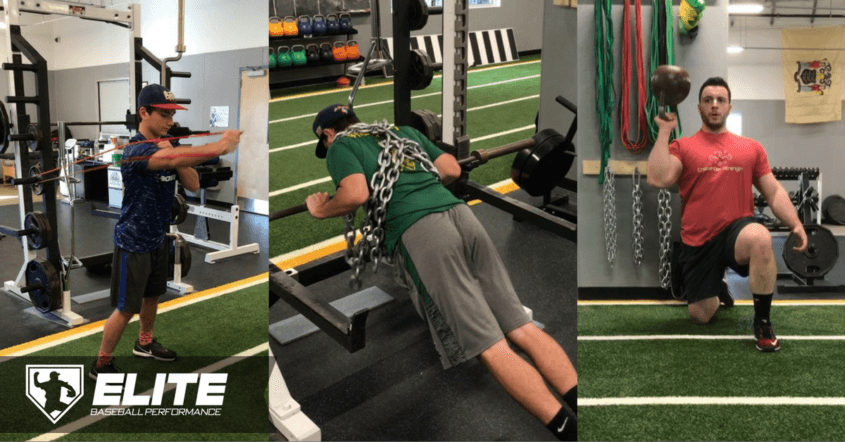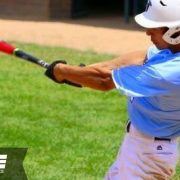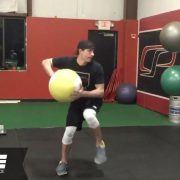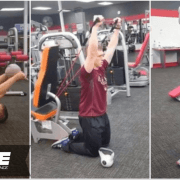4 Pressing Exercise Variations For Baseball Players
Developing a strong back is important for baseball players.
In the past I have talked about some general tips to use in order to grow a strong and big upper back. I have also given you some of my favorite exercises for the upper back and how to develop it.
This got me to thinking and I realized that not many coaches and athletes know how much of an importance should be placed on the role of the upper back when programming pressing movements for baseball players.
Many people neglect the involvement of the scapulae (shoulder blades) in their pressing variations and fail to see how much they can develop this aspect of their body if they simply focused on a few key details.
This would provide a multitude of benefits for athletes as their upper back plays a huge role in their health and performance.
For baseball players and rotational athletes (hockey, lacrosse, golf etc.) the upper back plays a huge role in not only their swing or shot, but it can also limit shoulder injuries if trained effectively. A strong upper back can help improve posture and limit the internal rotation of the shoulder (internal rotation can lead to labrum injuries due to the compression and force constantly placed on the acromioclavicular (AC) joint). So, not only can we contribute to an aesthetically pleasing upper back by making some adjustments in our pressing, but we can also limit injury and contribute to increases in performance for baseball players.
Here is a quick breakdown of external rotation, how to promote the use of the scapulae for presses with baseball players and my favorite exercise variations to do so!
What is External Rotation?
In my opinion, the best analogy to use to explain external rotation of the shoulders would be to have someone imagine that their arms are outstretched and fully extended with their hands on a wall. On that wall is a big sheet of paper, and your goal is to tear the paper down the middle without moving your hands. How exactly do we do that? Well, think as if you are trying to “screw” your hands into the wall, only without moving your hands outwards.
External rotation is created when we drive our right hand clockwise and our left hand counterclockwise. If we do this without actually moving our hands then we create torque, and that imaginary paper is now torn!
The shoulder is a ball and socket joint, meaning that the humeral head rotates about inside the cup-like socket of the shoulder blade. When we create proper torque the humeral rotates outward, hence “external rotation.”
Many of us perform presses without external rotation, which not only leaves us susceptible to injury but also does not allow us to develop the upper back and shoulder blades to the best of their ability. This has been said many times before, yet I still see baseball players utilizing presses that do not let the upper back work freely and independently of a bench. This is due to a number of factors, which include hand and grip positioning and the side effects of performing presses on a bench.
Basically, when our back is on a bench the bench itself does not allow for full scapula activation and retraction, which can limit external rotation and use of the upper back. Experienced lifters know how to properly activate the upper back and can get around this, but many others struggle.
Lastly, bilateral movements (presses with two hands) can negate the need to isolate each individual shoulder blade due to the fact that using both hands does not require as much stabilization as unilateral movements.
With that being said, here are a few variations that make use of these fundamental principles.
Dumbbell Piston Press
As I mentioned above, unilateral presses allow the shoulder blades to work independently of each other. In addition, they require more external rotation to be created in order to stabilize fully.
If I have a baseball player perform a bench press it will be with dumbbells due to the fact that they require more focused stabilization of the scapulae then barbell presses, and allow for a neutral grip to prevent stress on the shoulders. However, an even better way to guarantee shoulder blade activation and external rotation is to perform dumbbell presses in a piston-like manner. That is, perform each press individually (one side at a time) so that the athlete has to pay attention to activating the upper back and externally rotating at the shoulder in order to properly stabilize the weight.
I will also utilize these presses at lower weights for dynamic/speed repetitions as well for power development.
Barbell Push-Up
The barbell push-up not only is a great tool to use in order to teach the art of pressing but also it eliminates the use of the bench (as I mentioned), which can teach an athlete how to cue and activate the upper back while letting the upper back work independently.
Since we are performing presses without the support of the bench we can fully retract the shoulder blades with each repetition and learn how to activate the upper back. This is a simple movement for advanced athletes, so I will usually implement slower movements, isometric holds and even increase the load (with chains) in order to progress the movement and make it more challenging. Any type of push-up variation is great to use for baseball players.
Cable or Band Presses
Similarly to push-up variations, cable and/or band presses allow the athlete to perform pushes that allow the scapulae to work independently of one another. They also help place less stress on the shoulders.
Bottoms-Up Kettle Bell Presses
This last variation is the most advanced and ties in all the principles I have previously mentioned.
Holding the kettle bells in a bottoms-up position makes external rotation a necessity, and is why I love this variation. If you do not properly externally rotate it is almost impossible to stabilize the kettle bell. In addition, we are once again removing the bench from the equation and requiring true activation of the upper back and retraction (pinching) of the shoulder blades.
Lastly, if you really want to advance this variation and take it to the next level you can perform the presses unilaterally (one hand at a time), and tie in the same principles you would be when performing the dumbbell bench press in a piston manner!
Gerry DeFilippo
Latest posts by Gerry DeFilippo (see all)
- 3 Exercise to Develop Rotational Power in Baseball Players - February 20, 2018
- Why The 60-Yard Dash Is A Poor Way To Test Baseball Speed - December 19, 2017
- 4 Pressing Exercise Variations For Baseball Players - December 5, 2017













Leave a Reply
Want to join the discussion?Feel free to contribute!